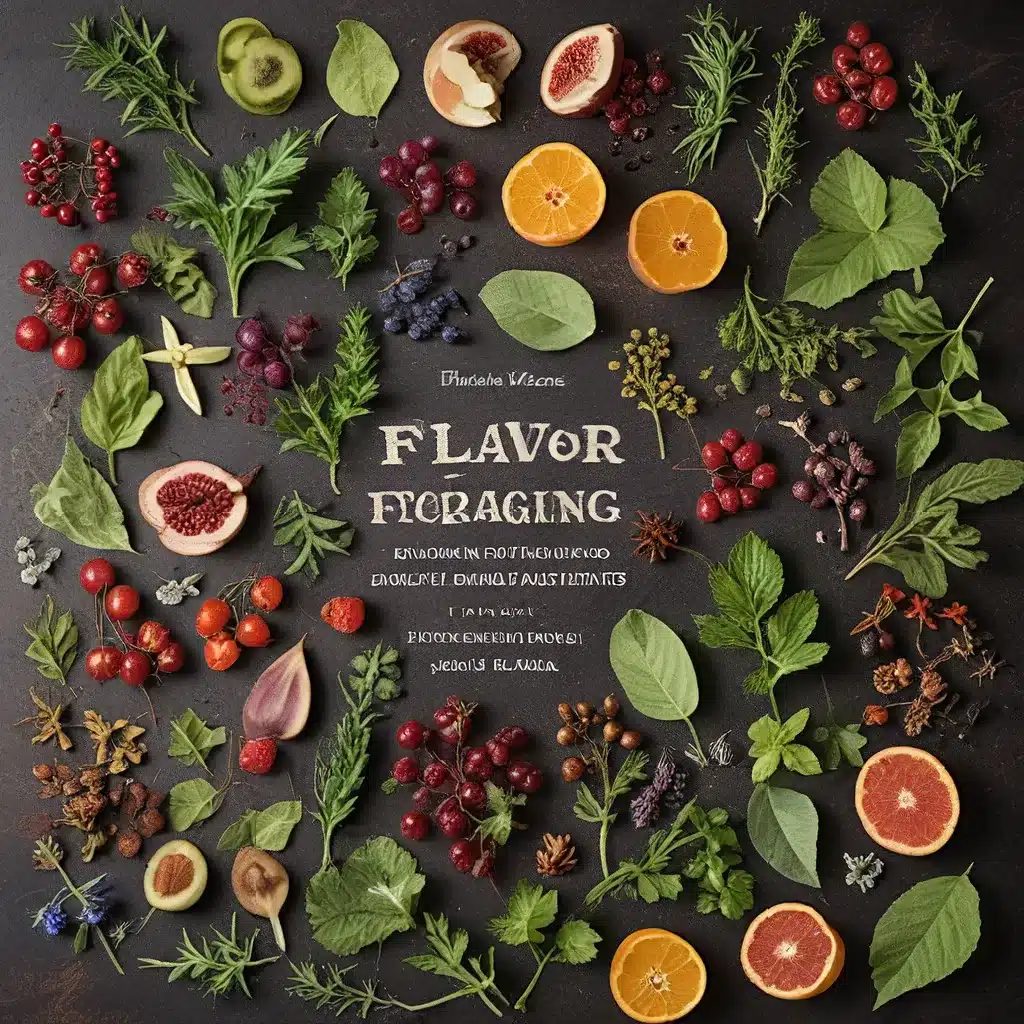
As a self-proclaimed culinary adventurer, I’ve long been fascinated by the abundance of unique and underutilized ingredients that nature has to offer. From the heady, sweet almond-like fragrance of plum blossoms to the potential wonders of apricot blossoms, the world of edible flora is a true treasure trove waiting to be explored.
In my quest to uncover these hidden gems, I’ve embarked on a flavor foraging journey that has taken me down unexpected paths and introduced me to a whole new world of gastronomic possibilities. And let me tell you, the discoveries I’ve made along the way have been nothing short of inspiring.
Plum Blossoms: The Essence of Spring
Take, for instance, the humble plum blossom. Often overshadowed by its more famous cousin, the cherry blossom, this delicate bloom has a unique flavor that truly captures the essence of springtime. As I learned from the knowledgeable folks at Gather Victoria, plum blossoms have a “heady sweet almond-like fragrance” that infuses beautifully into creams, syrups, and even vinegars.
Imagine a light and airy plum blossom panna cotta, or a refreshing plum blossom-infused vinaigrette to drizzle over a fresh spring salad. And let’s not forget the allure of plum blossom-dusted petit fours or the indulgence of plum blossom-infused chocolates. The possibilities are truly endless, and the results are nothing short of magical.
As I delved deeper into the world of plum blossoms, I discovered that not all varieties are created equal. The Prunus cerasifera Pissardii, with its nearly pure white flowers, is a common sight in my neighborhood, while the Prunus x blireiana, a hybrid with double layers of blossoms, adds an extra layer of visual and olfactory delight.
Foraging for Edible Flowers
But plum blossoms are just the tip of the iceberg when it comes to the world of edible flowers. As I’ve learned, there’s a whole host of other blooms that can be incorporated into our culinary adventures, each with its own unique flavor profile and potential for culinary magic.
Take, for example, the humble hibiscus. With its vibrant hues and tangy, almost cranberry-like flavor, this flower can be used to create everything from stunning desserts to refreshing cocktails. Just imagine a white chocolate drizzle infused with the essence of hibiscus, or a tart and tangy hibiscus-infused simple syrup to liven up your favorite libations.
And let’s not forget the delicate and fragrant rose. From the soft, floral notes of rose water to the robust, slightly sweet flavor of dried rose petals, this versatile bloom can be used in everything from baked goods to savory dishes. I’ve had the pleasure of incorporating rose into a number of my own creations, from a raspberry-chocolate cake with rose-infused white chocolate ganache to a simple but elegant rose-dusted dark chocolate truffle.
The Wonders of Wildcrafting
As I’ve continued my flavor foraging adventures, I’ve discovered that the true joy lies not just in the final culinary creations, but in the act of wildcrafting itself. There’s something deeply satisfying about connecting with the natural world, harvesting the bounty that it offers, and then transforming those ingredients into something truly special.
Whether it’s gathering plum blossoms at the peak of their bloom or sourcing fresh, fragrant roses from a local garden, the process of foraging and wildcrafting has become a cherished part of my culinary practice. It’s a way of honoring the rhythms of nature, of celebrating the beauty and abundance that surrounds us, and of infusing my creations with a sense of place and seasonality.
And the best part? I’m just scratching the surface. As I continue to explore the world of edible flora, I know that there are countless more treasures waiting to be discovered, each with the potential to elevate my culinary creations to new heights.
Embracing the Unexpected
Of course, with any foraging endeavor, there’s an element of the unknown and the unexpected. As I delved into the world of plum blossoms, I learned that while they are generally considered safe to consume, there may be trace amounts of hydrogen cyanide in the leaves, which should be removed before using the blossoms.
Similarly, I’ve heard rumblings about the potential pitfalls of experimenting with apricot blossoms, which apparently don’t taste quite as delightful as they smell. So, as with any new ingredient, it’s important to do your research, exercise caution, and use your best judgment.
But that’s all part of the adventure, isn’t it? The thrill of discovery, the excitement of the unknown, and the challenge of finding new and innovative ways to incorporate these unique ingredients into our culinary repertoire – it’s what keeps me coming back for more.
Connecting with Nature, One Bite at a Time
At the end of the day, my flavor foraging journey is about more than just discovering new and exciting ingredients. It’s about connecting with the natural world, about honoring the rhythms of the seasons, and about finding ways to celebrate the abundance that surrounds us.
Whether it’s infusing my creations with the essence of springtime plum blossoms or adding a touch of vibrant hibiscus to a summertime cocktail, each culinary adventure is an opportunity to deepen my relationship with the earth and to share that connection with others.
And who knows, maybe along the way, I’ll inspire a few fellow adventurers to join me on this delicious journey of discovery. After all, as the wise folks at Mountain Valley Spring reminds us, “From spring summer autumn to winter, I revive the ancient culinary arts of bringing blessings to ourselves, our families, communities, and to our Great Mother the Earth – one delicious bite at a time.”
So, let’s get foraging, my friends. The world of unique and underutilized ingredients is waiting, and who knows what delicious surprises it has in store.

